Oil Vs Water Based Stain (Pros And Cons)
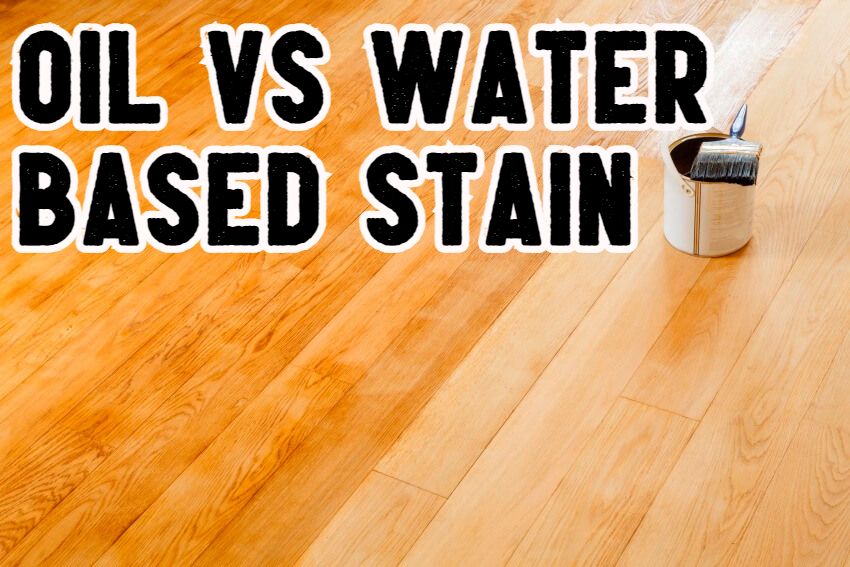
Stain adds more options to the aesthetics of wood, whether you’re dealing with a kitchen cabinet or the hardwood flooring in your living room. With many types of stains offered in the market, though, which one should you choose? You have the option to choose either an oil based stain or a water based stain, but how will you know which one to choose? The best step to take is to compare the pros and cons of both types and tackle their compatibility with the material you’re applying it on and the environment where it will be installed.
Which Is Better: Water-Based or Oil-Based Stain?
Choosing the better option between these two types of stains depends on what you’re using it for and what your priorities are. In making your decision, here are the factors you need to know about and the specific stain that’s superior and better than the other.
Check out this table for an easier oil vs water-based stain comparison.
| Elements/factors to consider | Oil-based stain | Water based stain |
| Drying time | Longer | Faster |
| Durability | Higher | Less |
| Wood grain rise | Unaffected | Can cause wood grains to rise |
| Flexibility | Not | Increased |
| UV light resistance | Can fade through exposure | Highly resistant |
| Environmentally friendly | Produces harmful VOCs | Eco-friendly |
Choosing the better product will also require you to consider where you will use the it. If you’re going for something outdoors, you might prefer oil-based stains because of their durability and resilience against rough weather elements. This is the same option for areas with high foot traffic.
But if you want your choice to be environmentally friendly and want something easy to work with, water-based stains are the ideal choice. Now let’s compare the key differences in-depth, starting with oil-based stains.
Oil Based Stain
An oil based stain is normally made from solvents and other types of varnish. It may even consist of petroleum distillates, as well as other ingredients like pigments (that give the application a wide variety of colors) and binder (help the solution stick well to the surface of the wood.
This particular stain is applied on sanded wood, where you can put 1 layer or 2 layers of coating, depending on what’s needed. It’s important to always sand the wood before applying the stain so if you will be putting a second layer, you will need to sand the wood again.
Every layer will take 2 hours (if it’s an interior coat) or 48 hours (if it’s an exterior coat), so you have to allow enough time for the stain to completely dry before moving on to the next step of the task. But before even starting on staining wood, make sure that you’ve already sealed it to protect the material from moisture.
And after staining the wood, you also need to apply a protective finish (oil-based) for a more solid guard against moisture. You can use polyurethane or other similar protective coatings.
oil-based stain naturally fades away through time, which is why re-staining is a vital task for the maintenance of the wood. Typically, oil-based stains last longer and you can simply check the wood if it doesn’t have the rich color of the initial application anymore and re-stain it.
Pros and Cons
When going for either oil-based or water-based stains, make sure you weigh the pros and cons of both options. With oil-based stains, here are the factors you can expect to take into account.
Pros of Oil Based Stains
Here are the positive elements that will make you consider and choose oil-based more than water-based stains:
• High durability – Many oil based stains are resistant to wear and tear, which is why they are the ideal option for areas with high foot traffic like the living room and kitchen, as well as outdoor areas like fences and deck designs.
• Better Coverage – It generally provides better coverage due to its higher solids content which provides deeper wood penetration. May require less coats than water-based to achieve similar results.
• Easier application – These coatings penetrate the wood better, making them a more effective choice that can adhere better to the wood and also easier to apply since it takes less effort to accomplish the task.
• May not require a final protective finish – With its durability and resilience, some oil-based stains do not need extra protection like the final finish but you always have the choice of using it when you want to.
• Guarantees a more even finish – These applications take more time when drying, giving you time to blend the strokes of your brush to have a smoother and more even surface. Lap marks are also not issues you will have to worry about.
• Does not peel – With better wood penetration and adherence, oil based stains are less likely to peel and simply fade through time.
Cons of Oil Based Stains
With the positive things about choosing oil based stains, you also need to prepare for the negative things they come with, including the following:
• Gives out toxic fumes – They give off a smell and a toxic odor that may take a few days to disappear, especially if you’re working indoors.
• May turn the wood black – They can only effectively fight against moisture after it fully cures, and while applying the stain, it can trap water leading to decay and causing the wood to turn black.
• Longer drying time – The time it takes for the oil based stain to dry is longer compared to a water based products. Since they use linseed oil as their binder, it contributes to a longer time to dry and can take up to 2 days or 48 hours to completely dry. This can be longer though in a wet or humid climate.
• May be harmful to the environment – These solutions may have higher volatile organic compounds or VOCs that are harmful to the environment and can even lead to dangerous health issues, including dizziness, nausea, and other respiratory conditions. They are also highly flammable and so you should take that into account when using and storing them.
When to Use This Stain Type
You can use and apply oil based stains in both interior and exterior areas with incredible durability and resilience. This means that oil based stains are more flexible to apply and can be used for the following:
• Interior elements – Floors, cabinets, furniture, and other wooden installations
• Exterior elements – Fence, decks, outdoor floors, and outside wooden installations
You can use an oil based stain on your hardwood flooring since the coating can survive high foot traffic. Applying oil based stains on areas with high foot traffic, like the living room and kitchen is ideal. And since it takes a long time to dry, using the application on a large surface area is also ideal.
Oil Based Stain Durability
Durability is one of the best features of an oil based stain and it is highly superior compared to a water based product. Its durability comes from its ability to naturally penetrate the wood more thoroughly since oil molecules are smaller and so can hold more fiercely on the wood than the bigger water molecules.
Since oil molecules can penetrate better, oil based stains have better adhesion and maintain their condition over time that would fade over time and not peel as water based stains do.
If you’re looking for a stain that can withstand exterior elements like wind and storms outdoors, oil based is the ideal option. Decks and fences are the perfect elements for oil based stains and if you have furniture or wooden installations that you want to improve their durability, then applying oil based stains is also an excellent consideration. See more ideas about fence stain vs paint here.
Water Based Stain
A water based stain is a result of a technological innovation that brings out the best in new finishing techniques, from flexibility to being environmentally friendly. The water based stain is comprised of dye/pigment, a binder, and a solvent which comes in the form of water. This is the major difference between water based and oil based stains.
This particular coating works in a way where the wood is allowed to breathe since it won’t clog its pores, making sure that moisture will not be inside the treated wood that can cause molding and decay in the process.
However, since the stain won’t penetrate the wood that well, there will always be issues with durability and resilience, especially when compared to oil-based stains that hold on and penetrate the wood excellently.
Just like with oil-based varieties, you need to seal the wood before you apply water-based stains. You also have the option to apply the final finish, and with this type, water-based polyurethane will be the best option.
Water-based stains may require more layers compared to oil-based stains, especially if you want to improve the durability of the wood you’re working on.
Pros And Cons
Choosing water based stains means that you will need to take into account the advantages and disadvantages you will experience with this option. Check out if the benefits outweigh the drawbacks.
Pros of Water Based Stains
Water based stains were made and developed to deal with the drawbacks that some may find difficult to compromise with when they choose oil based stains. And some of the notable benefits you’ll experience from choosing water based stains are the following:
• Safer and comfortable application – Since they do not give off a smell and toxic fumes, the application is guaranteed to be more comfortable and easy.
• Dries faster – If you are a busy person but still prefer to DIY home renovations, water based stain is a good option since it dries up faster so you can also go back to your regular schedule more quickly. The drying time is around 1 to 2 hours after its application.
• Highly flexible – Beginners would love this type since errors won’t be irreversible. If you’ve made a mistake that needs fixing, you can just wipe the surface with water and soap.
• Easier cleaning and maintenance – These coatings are easier to clean and maintain compared to oil based stains. Both the binder and solvent used for this coating are water so they are easier to clean.
You just need water and soap to complete this task. The maintenance is also pretty straightforward since once you notice the stain fading, you just need to clean it up first with water and soap and re-apply the coat without requiring any sanding or stripping.
• A wide range of colors – You can choose from a vast range of colors once you consider this coating. With this, you can match the wood stain colors with the color palette you have at home.
• Resistant to UV light and mold – Water based stains are resistant to both mold and UV light. Since the stains are not food for algae, mildew, and mold, they won’t attract attention to these organisms, which may lead to their buildup. These applications are also resistant to UV light so you can retain the color of the stain longer.
• Environmental-friendly – When it comes to the environment, water based coatings are definitely far superior to oil based. They do not produce toxic fumes, and using these products won’t lead to the production of VOCs, which are incredibly harmful to the environment. You also won’t need to use harmful solvents for their application or cleanup since soap and water are enough.
Cons of Water Based Stains
While water based stain seems like the perfect choice, there are still drawbacks that come with it that are worth considering. Some of these are the following:
• Lack of durability and resilience – These coatings are notably less durable and resilient because they will require a final protective coating, especially when used outdoors or in humid areas.
• Requires more time and care in its application – While they may dry faster, they also require more meticulous preparation and application so the entire job won’t be completely botched.
• Has trouble adhering to the wood – These applications are known for not being able to penetrate the wood as well as oil-based stains. Because of this, they have the tendency to peel, especially when over-applied.
• Might raise the wood grains – Moisture and water can cause the grains in the wood to swell. This is why the wood grain needs to be buried first before staining, which generally means intentionally raising the grains and then sanding them to even them out before staining.
• Does not last longer than oil based stains – While durable and can take wear and tear, these types have a shorter lifespan and can fade faster, and require re-staining earlier.
When to Use This Type of Wood Stain
Water-based stains are more flexible to use but because of their issues with durability and resilience, using them outdoors where they will be subjected to rough weather elements is a bad idea.
Water-based stains are, however perfect for the following:
• Indoor cabinets
• Wooden decorative objects
• Frames
Make sure to apply a water-based protective finish like a polyurethane coating for additional protection.
Stain Durability
Durability is not a strong characteristic of a water based stain. When it comes to resistance to wear and tear and rough weather elements, oil based stain will always be superior. However, if you’re considering other factors that can affect durability like mold and UV light, water based stain has a fighting chance.
Water based stains have a lesser tendency of mold buildup and can guarantee to resist the effects of UV light, making it possible to retain their color longer compared to oil based stains even if it’s more durable. It is worth noting though that it has the tendency to peel over time or because of over-application.
Can You Put Oil-Type Stain Over Water-Type One?
Yes, you can put oil-based over water-based stain but make sure that the coating has enough time to cure and dry out completely. Coating over water-based stains means you must wait 24 hours before applying the oil-based product you’ve chosen.
And since an oil-based finish can turn amber over a period of time, you can only put it over water-based stains if it has a darker shade and not white or very light colors.
In addition to that, make sure that the coating is not too thick before you apply the oil based one. You may also check more ideas about painting over stained wood here.
Can You Apply Water Type Stains Over Oil Types?
Yes, you can put water-based stain over oil-based stain but make sure you follow the basic rules in using both. First, never mix the two stains; second, ensure that the first coating is completely cured and dry.
When applying a water based stain over an oil-based one, you need to wait approximately 72 hours to be sure that the coating is completely cured and dry before you apply the water-based one. This will make sure that the stain will stick and stay longer.
What do you prefer when it comes to an oil vs water-based stain? Do you have any experience or tips with using either type? Please share your thoughts in the comments below. For more related content visit our article about deck paint vs stain here.

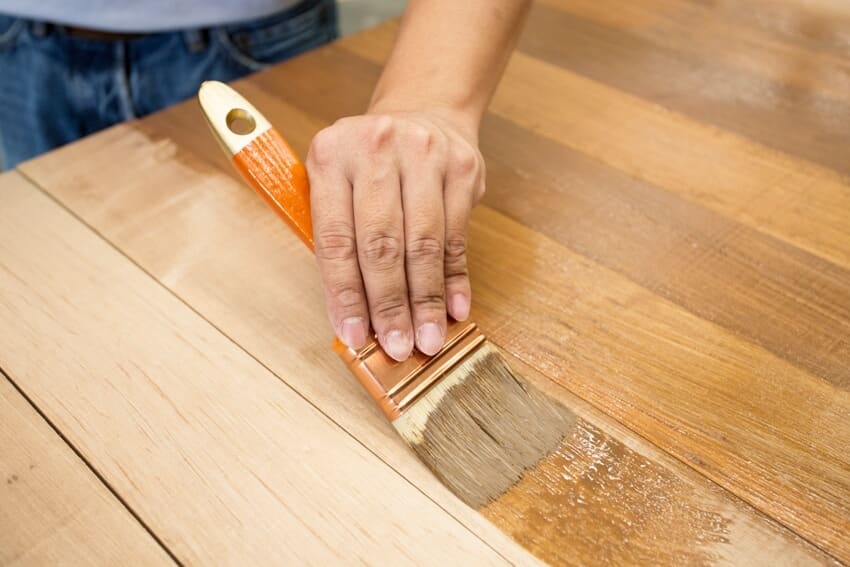




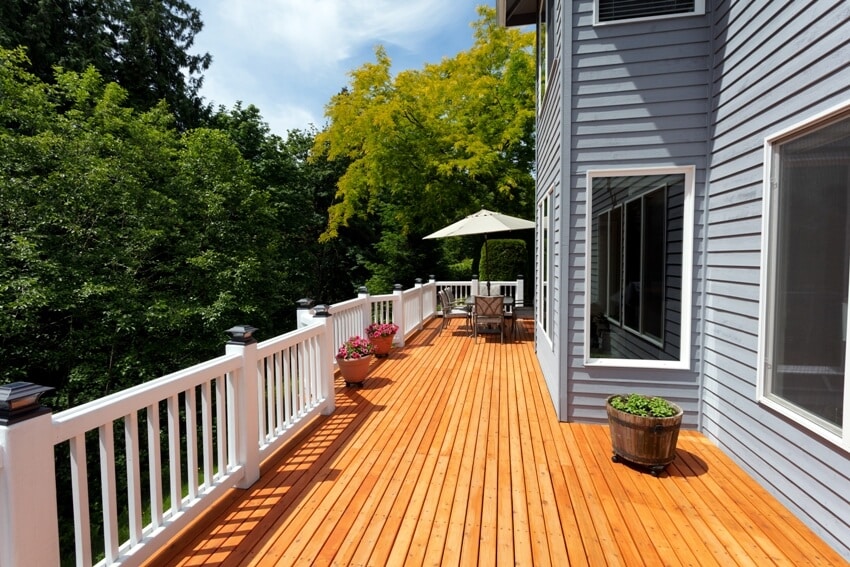

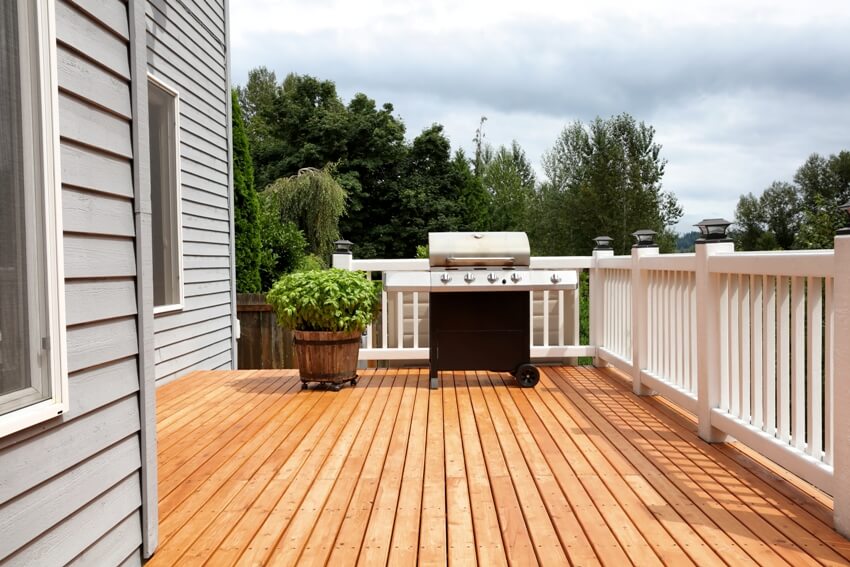







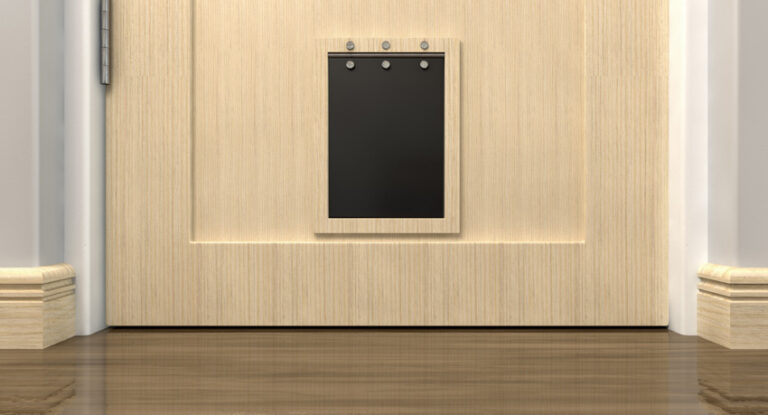
I have just finished staining a small exterior deck with Cabot’s modified oil which has replaced the original. It is not oil, but water-based. The result is blotchy and dry compared with the original. Almost every article I have read recently praised the water-based stains as being every bit as good if not superior. So sorry I believed them. Your article explains why and I wish I had read it before experiencing this disappointment.
Thank you Joan for sharing your experience and for the kind words.